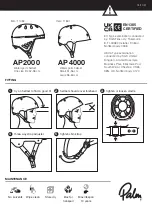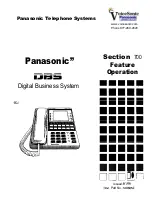
Pro Spectrum User Manual v2.1
32
Appendix D
Glossary
Accuracy
The angular average distance from the actual gaze point to the one meas-
ured by the eye tracker. For more details on how accuracy is calculated,
please read the Data Quality Test Report for this eye tracker on
.
Binocular calibration
The eye tracker collects data from both eyes the same time and pro-
cesses the data for each eye independently. The calibration is valid when
it succeeds in collecting and processing data from both eyes.
Binocular eye track-
ing
Tracks and reports data for both left and right eye.
Blink recovery time
(time to tracking
recovery for blinks)
When a participant blinks, the eye tracker loses the ability to track eye
gaze because the eye is covered by the eyelid. If the pupil is occluded for
only a short period (a few hundred milliseconds), the system will regain
tracking immediately when the pupil becomes visible again, but only if the
subject has maintained approximately the same head position during the
blink. Data during blinks are only lost when the pupil is occluded, i.e. dur-
ing the eye lid movement itself or when the eye is closed.
Bright pupil tracking
The process of capturing and processing eye images, with a set of illu-
minators that are placed close to the optical axis of the camera. This
causes the pupil to appear lit up in the image (this is the same phe-
nomenon that causes red eyes in photos). The eye tracking algorithms
identify the pupil by searching for a bright elliptical form in the image.
Dark pupil tracking
The process of capturing and processing eye images, with a set of illu-
minators that are located further from the optical axis of the camera. This
causes the pupil to appear darker than the rest of the eye in the image.
The eye tracking algorithms identify the pupil by searching for a dark ellipt-
ical form in the eye image.
Data sample output
Type of data provided by the eye tracker
Eye image data
stream frequency
The number of eye images per second outputted in the eye image data
stream, expressed in Hz units. These images can be used to help to
troubleshoot tracking issues.
Freedom of head
movement
Describes the region in space where the participant may move his/her
head and still have at least one eye within the eye tracker’s field of view
(trackbox).
Gaze recovery time
An eye tracker working in a natural user environment may occasionally
lose track of the subject’s eyes, e.g., when the subject completely turns
away from the tracker. If a period of a few hundred millisecond elapses
during which the eye tracker is unable to detect the eyes near where they
were last detected, the eye tracker will start searching for the eyes within
the entire head movement box. The stated measurement is the typical
time to tracking recovery once the eyes return to the field of view of the
cameras again, i.e. when the subject is within the trackbox limits, with the
Summary of Contents for Pro Spectrum
Page 1: ...Pro Spectrum User Manual ...



































